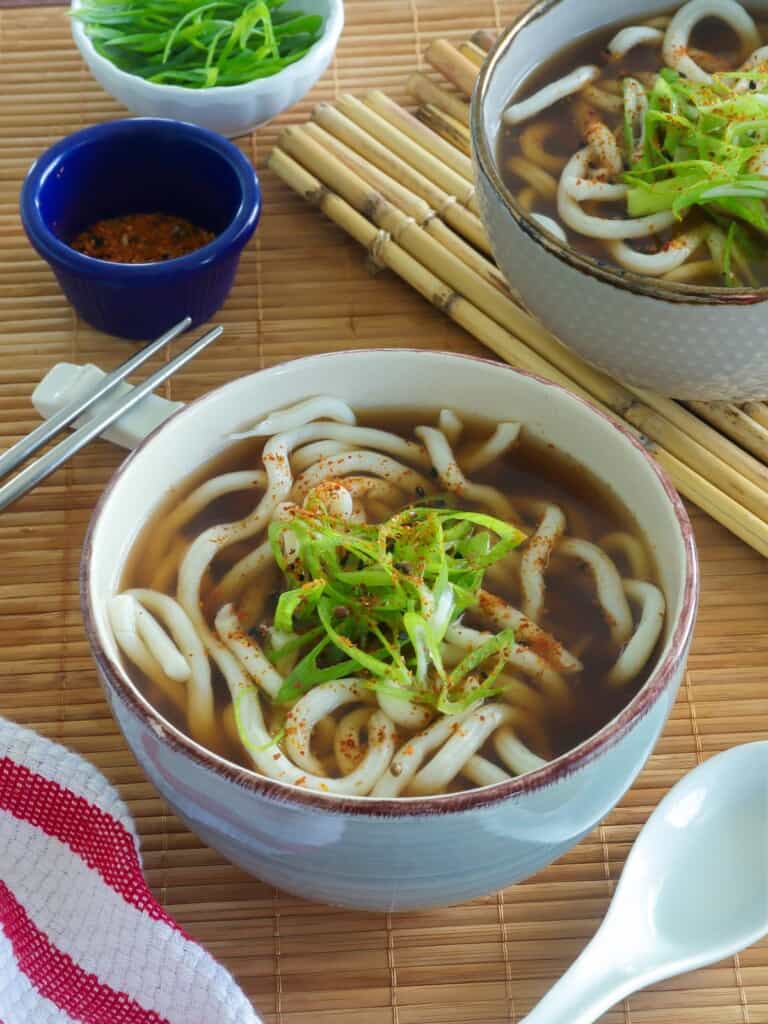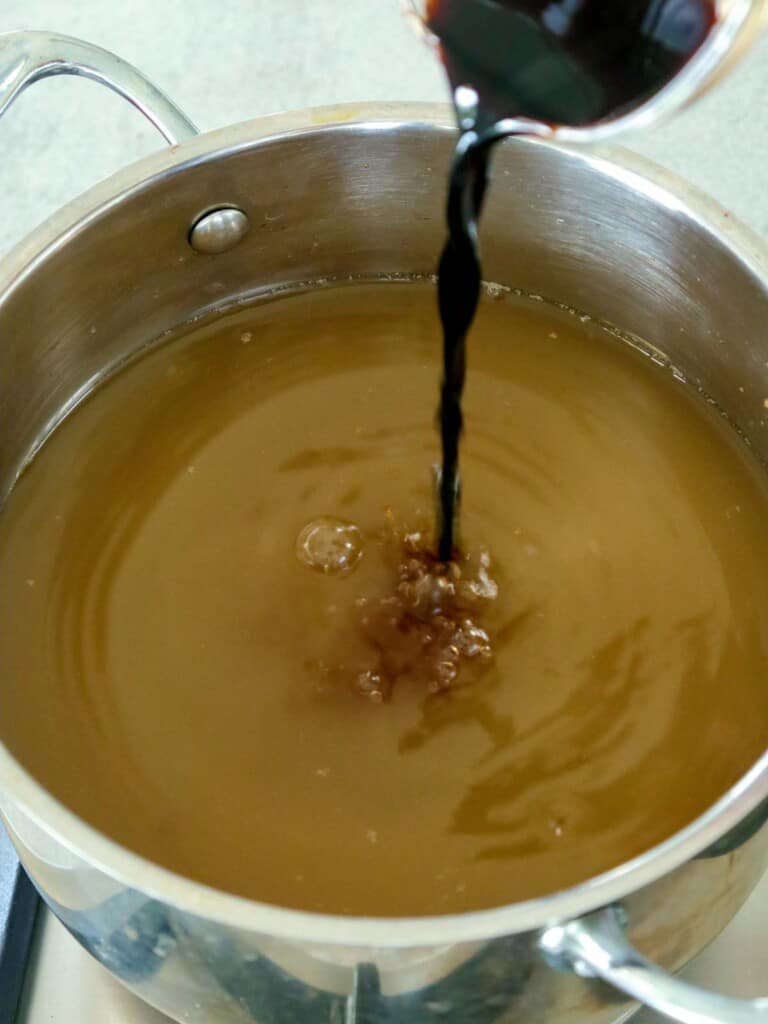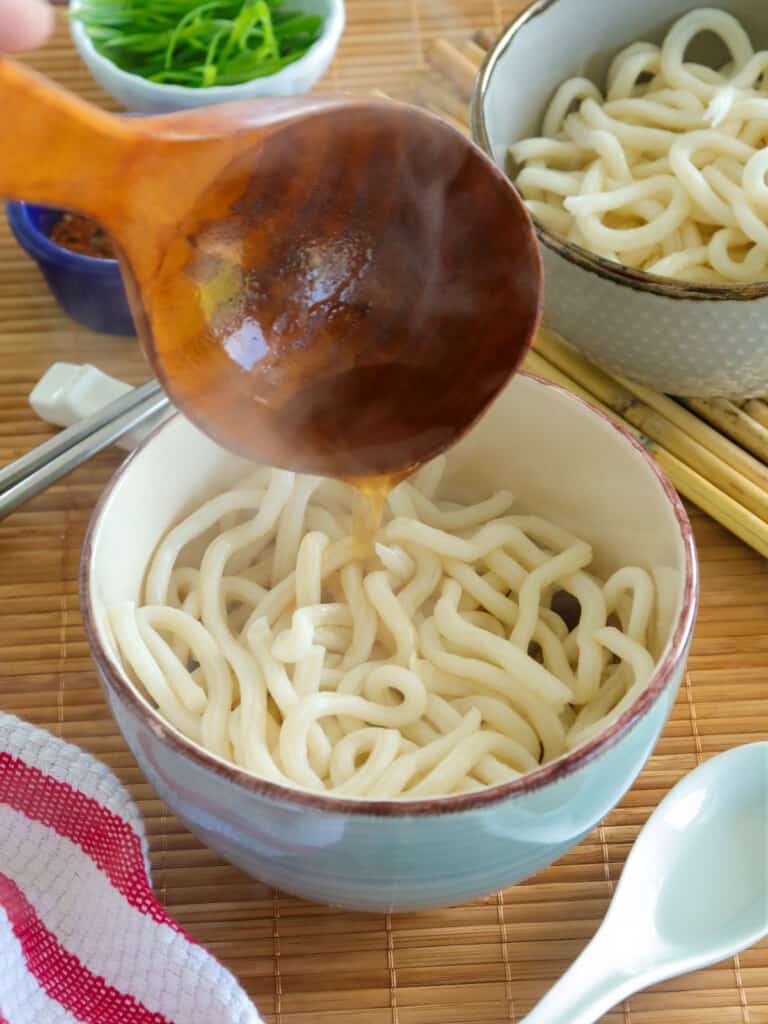Warm yourself with a bowl of steaming hot bowl of Kake Udon. This Japanese dish is simple yet packed with flavor and is satisfyingly delicious! From the thick, chewy noodles to the rich and savory broth, it is comfort food at its finest!

Kake Udon is a traditional Japanese noodle dish consisting of thick, chewy wheat noodles in a savory hot broth made with dashi, soy sauce, sake, and mirin called kakejiru. It makes a comforting meal on cold days, but it is light enough to enjoy during warmer weather.

What you’ll need
- Dashi– soup stock that is widely used in Japanese cuisine. It has a sweet and savory note with a deep umami flavor that adds richness and depth. to many dishes. You can make from instant dashi powder or from scratch with dried kelp and bonito flakes.
- Soy Sauce– lends a salty and umami flavor.
- Mirin– Japanese rice wine that is golden in color with a syrupy consistency. It has a slight sweetness and tang that balances the savory flavor of the dish.
- Sake– Japanese alcoholic beverage made from fermenting rice. It adds a rich, deep flavor to the soup.
- Udon Noodles – long and thick noodles that are made from wheat flour. Available fresh or dried.
- Ginger– adds a warm flavor and delicious aroma
- Spring onions– for color and touch of freshness

Two ways to make Kakejiru (Noodle broth) using shortcut methods
- Make dashi broth using instant dashi powder. Add soy sauce, mirin, sake, and salt according to recipe below. Bring to a boil and simmer.
- Use mentsuyu, a concentrated soup base made from mirin, sake, sugar, kombu, and katsuobushi. To make broth, dilute 1 part with 5 to 6 parts water and simmer.
Quick tip
Prepare the fresh udon noodles according to package directions and drain well. Rinse under cold running water to remove extra starch and stop the cooking process, keeping them firm and chewy. Briefly run under hot water in a colander to warm up when ready to serve.

How to serve
Kake udon s incredibly easy to make, using convenient items such as instant dashi powder and packaged fresh udon noodles. It can be enjoyed as is with simple spring onion and Japanese seven spice blend garnishings or fancied up with tasty toppings such as vegetables, fish cakes, tempura, soft-boiled eggs, nori seaweed, or cooked meats.
How to store
- Store the noodles and the broth separately in individual containers. Refrigerate for up to 3 days.
- Reheat the broth in a saucepot over low heat. Run the noodles under hot water in a colander to warm up.


